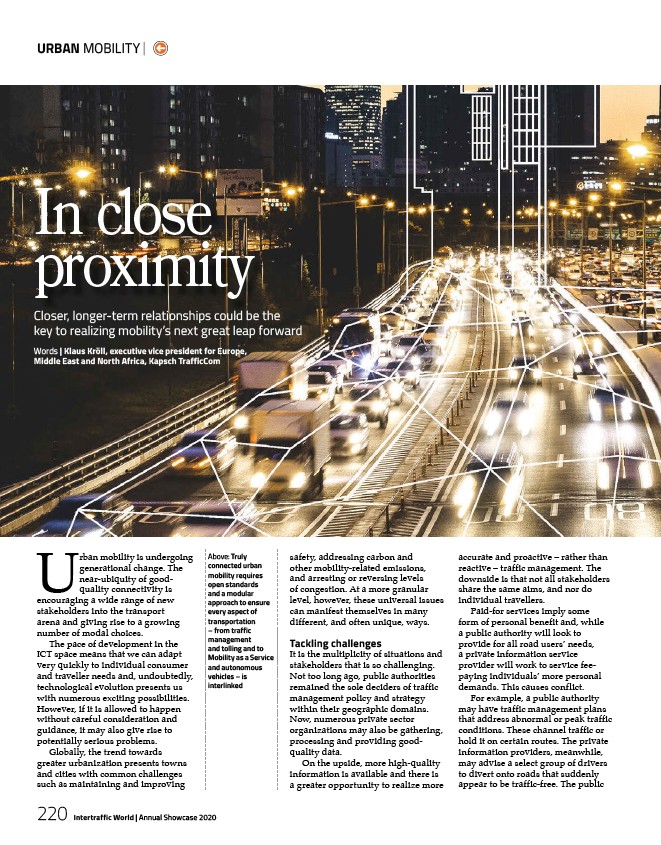
URBAN MOBILITY |
Ipnro cxloimseit y
Above: Truly
connected urban
mobility requires
open standards
and a modular
approach to ensure
every aspect of
transportation
– from traffic
management
and tolling and to
Mobility as a Service
and autonomous
vehicles – is
interlinked
Urban mobility is undergoing
generational change. The
near-ubiquity of goodquality
connectivity is
encouraging a wide range of new
stakeholders into the transport
arena and giving rise to a growing
number of modal choices.
The pace of development in the
ICT space means that we can adapt
very quickly to individual consumer
and traveller needs and, undoubtedly,
technological evolution presents us
with numerous exciting possibilities.
However, if it is allowed to happen
without careful consideration and
guidance, it may also give rise to
potentially serious problems.
Globally, the trend towards
greater urbanization presents towns
and cities with common challenges
such as maintaining and improving
220 Intertraffic World | Annual Showcase 2020
safety, addressing carbon and
other mobility-related emissions,
and arresting or reversing levels
of congestion. At a more granular
level, however, these universal issues
can manifest themselves in many
different, and often unique, ways.
Tackling challenges
It is the multiplicity of situations and
stakeholders that is so challenging.
Not too long ago, public authorities
remained the sole deciders of traffic
management policy and strategy
within their geographic domains.
Now, numerous private sector
organizations may also be gathering,
processing and providing goodquality
data.
On the upside, more high-quality
information is available and there is
a greater opportunity to realize more
accurate and proactive – rather than
reactive – traffic management. The
downside is that not all stakeholders
share the same aims, and nor do
individual travellers.
Paid-for services imply some
form of personal benefit and, while
a public authority will look to
provide for all road users’ needs,
a private information service
provider will work to service feepaying
individuals’ more personal
demands. This causes conflict.
For example, a public authority
may have traffic management plans
that address abnormal or peak traffic
conditions. These channel traffic or
hold it on certain routes. The private
information providers, meanwhile,
may advise a select group of drivers
to divert onto roads that suddenly
appear to be traffic-free. The public
Closer, longer-term relationships could be the
key to realizing mobility’s next great leap forward
Words | Klaus Kröll, executive vice president for Europe,
Middle East and North Africa, Kapsch TrafficCom